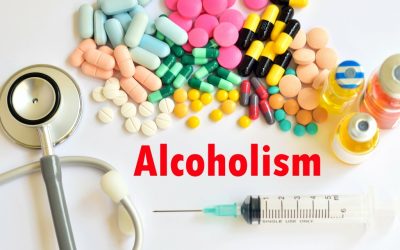You and your community can take steps to improve everyone’s health and quality of life. Causes of death and post mortem findings in the seven cases of alcohol related arrhythmia. But if you feel you need extra help, you may want to check out your local branch of Alcoholics Anonymous. EtOH stands for ethanol, which is a type of alcohol commonly found in beverages like beer, wine, and spirits. Participation in support groups can be instrumental for those recovering from alcohol addiction by creating a network of shared responsibility and solidarity. These communal settings are an integral component of rehabilitation because they help members combat feelings of isolation while reinforcing collective encouragement.
Dangerous Effects of Chronic Alcoholism

You can also check out reviews online or talk to people who have completed programs. Once inpatient rehab is complete, treatment options become modified to meet your needs. Intensive outpatient, outpatient, sober living, and support groups are a few Drug rehabilitation options.
Other chronic diseases
Addressing these risks is essential for maintaining overall health and well-being. While ethanol is safe for consumption in moderate amounts, methanol, also known as wood alcohol, is highly toxic and can cause serious harm if ingested. Methanol is chemically classified as an alcohol, but unlike ethanol, it is not safe for human consumption. A specific form of rigorous outpatient care known as Partial Hospitalization Programs (PHPs) enables patients to receive considerable attention during the day yet allows them to spend nights at home.
What Is the scientific name for chronic kidney disease?
- Patients under the influence of alcohol are more likely to be involved in trauma-related injuries.
- Today, medications help reduce the craving for alcohol and the desire to drink excessively.
20 retrospective cases were excluded (19 as the post mortem reports were incomplete and one as the report was limited to the brain), giving a total of 1,292 cases that were examined (939 retrospective, https://techninjahive.com/index.php/2023/02/10/what-is-a-dry-drunk-and-how-it-often-results-in/ 353 prospective). 782 (60.5%) were male, 509 (39.4%) were female and one retrospective case was of unknown sex. One hundred and twenty seven (9.8%) had a history of alcohol excess, 160 (12.4%) had diabetes mellitus and 305 (23.6%) had hypertension.
- Realizing you may have an issue is the first step toward getting better, so don’t hesitate to talk to a healthcare provider.
- Chronic alcohol abuse and binge drinking are two separate issues even though they feed into each other.
- Ethanol, in general, is neurotoxic and can affect cognitive functions negatively.
- Gamma-aminobutyric acid (GABA) is the primary CNS inhibitory neurotransmitter.
This means that you’ll eat more food than usual without burning calories, which can lead to weight gain if left unchecked over a long period. These symptoms often worsen over time, signaling the potential development of alcohol use disorder (AUD). If these signs are present, seeking professional help can be a critical step toward recovery. EtOH is the chemical abbreviation for ethanol, the type of alcohol found in alcoholic beverages like beer, wine, and spirits.

How Does Ethanol Affect the Body?
It also can harm your liver, which plays an important role in your immune system by making antibacterial proteins. This form of arthritis results from painful buildup of uric acid in the joints. You can get gout from eating too much food high in chemicals called purines, which include red meat, shellfish, and alcohol — especially beer and liquor. This is when your body doesn’t make enough healthy red blood cells to move oxygen around. Too much booze may also make you more likely to skip meals, which can short-change your body of iron.
Acute pancreatitis
- The te“m “alco”ol” can refer to a wide range of chemical compounds, but in everyday usage, it most often refers to ethanol (ETOH).
- It’s a serious condition that can impact physical health, relationships, and mental well-being, making early recognition and treatment crucial.
- Tests like blood alcohol concentration (BAC) and evaluations by health professionals are key.
- Grain alcohol such as Everclear and homemade alcohol like moonshine have comparatively high ABV and proof levels than are found in strong spirits like whisky and rum.
- Seeking professional help is essential for overcoming alcohol dependence.
Raising awareness about the effects of ethanol on the human body can discourage excessive alcohol intake. In healthcare settings, EtOH is frequently used in medical what is chronic ethanol use documentation to denote alcohol consumption, which is crucial for patient assessments and managing health conditions related to alcohol use. Also, alcohol withdrawal symptoms can be an immediate risk for those who drink heavily.

Fortunately, there are effective treatments that can help, including medications, therapy, and support groups. Understanding what is chronic alcoholism leads to the realization that recovery is a multifaceted approach involving more than just the cessation of alcohol intake. Medication-assisted treatment may also be used to help manage cravings and withdrawal symptoms. Personal determination, coupled with professional help and a supportive network, forms the cornerstone of successful recovery.
